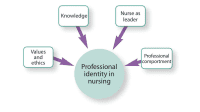Now more than ever, the U.S. healthcare industry realizes that public scrutiny, payer analysis, and heightened government oversight are shining a laser-beam focus on patient outcomes that result from clinical quality and patient safety activities. Payer mandates make headlines when they announce payers will no longer reimburse hospitals or doctors for “never events”—medical errors that should never happen. These changes in payment rules have heightened the urgency to find better approaches to quality improvement.
The missing link that will create real change and better outcomes for hospitals and patients is the need for active nursing leadership at the bedside to drive them. The pressure has never been greater, and I’ve come to appreciate how hard this work really is.
I’d like to propose a few thoughts to help connect leadership at the bedside to improvement:
- The value of a learning community: We may not have it all together, but together we have it all. This thought was shared during a recent CHRISTUS Health nursing retreat, where the “A-ha” was clearly a sign of relief. “I don’t need to know everything. I just need to know others who do.” Nurses have the collective wisdom to act on issues and improve care.
- Nurses save lives, but you can’t run a code by yourself. As a staff nurse in the U.S. Navy Nurse Corps, I learned early in my career that I couldn’t save a patient by myself during a code. You call the code, then your team helps you deal with the emergency at hand. It’s all about teamwork and leadership at the bedside.
- Looking outside of health care: We can learn valuable lessons from high-reliability industries. Hospitals aren’t alone when it comes to dealing with improvement issues. What can nurses learn from high-reliability industries, such as the airlines and nuclear power? While high-reliability organizations differ in many ways, they all share a fundamental ingredient for creating sustainable improvement—a culture of safety with committed senior leaders and a highly engaged workforce.
- Personal commitment: Do you have the time? Nurses and nursing leaders need to signal their personal commitment to improving nursing care. We need to grow, learn, and develop a passion for dealing with the variations in care that we find as a result of improvement efforts. We need to dedicate time to enhancing our skills and changing our own behavior. Right now, no one seems to have the time, because the urgent drives out the important. So a critical element in this work is to carve out the time for what we need to do.
Getting smart: Preparing for the challenge
Ensuring that staff have the knowledge and skills to deal with improvement issues poses a challenge. When leaders admit they don’t know but are learning, they’re creating a safe haven for others to say, “I don’t know, but I will find out.” Showing strategic humility at all levels goes a long way toward creating a culture of continuous improvement.
Here are some questions that can get the dialogue going:
- How can we get real smart, real fast?
- How can we stop reinventing the wheel?
- How can we capitalize on the latest technology to help us?
- What’s the best way to respect the generation gaps among nurses and meet the specific learning needs of each generation?
- How can we ensure that “leadership for improvement” happens every day, from the boardroom to the bedside?
The bottom line when it comes to nurses and improvement strategy: It takes both to succeed.
Lillee Gelinas, MSN, RN, FAAN
Editor-in-Chief


















